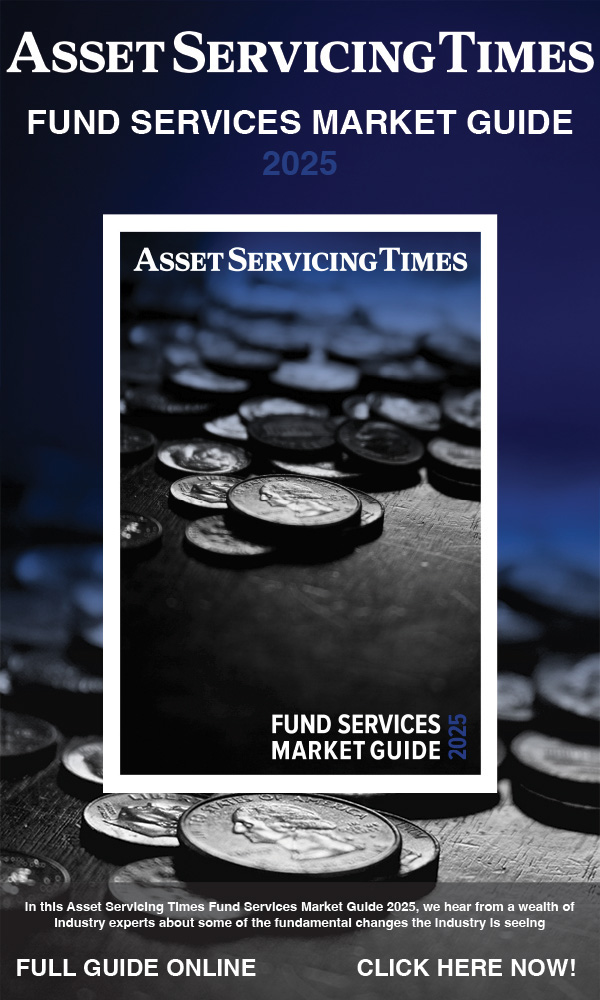FSOC: Blockchain and cybercrime threaten stability
23 June 2016 Washington DC
 Image: Shutterstock
Image: Shutterstock
The US Financial Stability Oversight Council (FSOC) has highlighted distributed ledger technology and cybercrime as threats to financial stability.
In its 2016 annual report, the council, including representatives from the US Department of the Treasury, the Securities and Exchange Commission and the Commodity Futures Trading Commission, highlighted blockchain and the increase in malware attacks as ‘potential emerging threats and vulnerabilities’.
FSOC reports to Congress, making recommendations to promote market discipline, maintain investor confidence and improve the integrity, efficiency and competitiveness of the US markets.
The report acknowledged that distributed ledger systems could allow market participants to manage various types of bilateral or multilateral transactions without the need for a third party participant, potentially improving efficiency and reducing risk.
It also noted that blockchain technology could improve market transparency, by virtue of being broadly accessible and verifiable. The technology could also reduce concentrated risk exposures, improve the speed and accuracy of settlement and reduce counterparty and operational risks of exchanging assets, the report said.
However, the FSOC also noted that, like all new technologies, blockchain presents risks and uncertainties that both regulators and market participants should be aware of and monitor.
The report said: “Market participants have limited experience working with distributed ledger systems, and it is possible that operational vulnerabilities associated with such systems may not become apparent until they are deployed at scale.”
It noted the recent delays in bitcoin trade confirmations and suggested that some distributed ledger systems may be “vulnerable to fraud executed through collusion among a significant fraction of participants in the system”.
Finally, the report suggested that regulators should strive to adapt to the new market structure, working together to effectively monitor and manage the risks involved.
It said: “Since the set of market participants which makes use of a distributed ledger system may well span regulatory jurisdictions or national boundaries, a considerable degree of coordination among regulators may be required to effectively identify and address risks associated with distributed ledger systems.”
The report also addressed the issue of cybersecurity – specifically with regards to protection against attacks using destructive malware, which it said are “infrequent and yet potentially catastrophic”.
It said: “Financial institutions, working with government agencies, should understand this risk and take steps to improve cybersecurity, engage in information sharing efforts, and prepare to respond to, and recover from, a major incident.”
The council recommended that these preparations should include consideration of the potential technical impact of an attack, business implications and response mechanisms, as well as considering the potential effect on the wider financial system.
Other notable areas covered in the report include the issue of ‘gaps’ in data available to regulators, and the lack of interoperability between authorities; the importance of ensuring there is enough capital and liquidity to reduce systemic risk; standards for central counterparties and their clearing members; and risk caused by low interest rates and volatility in asset pricing.
Treasury secretary Jacob Lew said: “The council’s annual report is a vital vehicle to publicly highlight potential threats to financial stability and is another example of how Wall Street Reform has improved coordination among financial regulators.”
He added: “In this year’s annual report, the council outlines potential threats on the horizon and offers an important roadmap to help guide the council’s focus in the coming years.”
A full copy of the report is available here.
In its 2016 annual report, the council, including representatives from the US Department of the Treasury, the Securities and Exchange Commission and the Commodity Futures Trading Commission, highlighted blockchain and the increase in malware attacks as ‘potential emerging threats and vulnerabilities’.
FSOC reports to Congress, making recommendations to promote market discipline, maintain investor confidence and improve the integrity, efficiency and competitiveness of the US markets.
The report acknowledged that distributed ledger systems could allow market participants to manage various types of bilateral or multilateral transactions without the need for a third party participant, potentially improving efficiency and reducing risk.
It also noted that blockchain technology could improve market transparency, by virtue of being broadly accessible and verifiable. The technology could also reduce concentrated risk exposures, improve the speed and accuracy of settlement and reduce counterparty and operational risks of exchanging assets, the report said.
However, the FSOC also noted that, like all new technologies, blockchain presents risks and uncertainties that both regulators and market participants should be aware of and monitor.
The report said: “Market participants have limited experience working with distributed ledger systems, and it is possible that operational vulnerabilities associated with such systems may not become apparent until they are deployed at scale.”
It noted the recent delays in bitcoin trade confirmations and suggested that some distributed ledger systems may be “vulnerable to fraud executed through collusion among a significant fraction of participants in the system”.
Finally, the report suggested that regulators should strive to adapt to the new market structure, working together to effectively monitor and manage the risks involved.
It said: “Since the set of market participants which makes use of a distributed ledger system may well span regulatory jurisdictions or national boundaries, a considerable degree of coordination among regulators may be required to effectively identify and address risks associated with distributed ledger systems.”
The report also addressed the issue of cybersecurity – specifically with regards to protection against attacks using destructive malware, which it said are “infrequent and yet potentially catastrophic”.
It said: “Financial institutions, working with government agencies, should understand this risk and take steps to improve cybersecurity, engage in information sharing efforts, and prepare to respond to, and recover from, a major incident.”
The council recommended that these preparations should include consideration of the potential technical impact of an attack, business implications and response mechanisms, as well as considering the potential effect on the wider financial system.
Other notable areas covered in the report include the issue of ‘gaps’ in data available to regulators, and the lack of interoperability between authorities; the importance of ensuring there is enough capital and liquidity to reduce systemic risk; standards for central counterparties and their clearing members; and risk caused by low interest rates and volatility in asset pricing.
Treasury secretary Jacob Lew said: “The council’s annual report is a vital vehicle to publicly highlight potential threats to financial stability and is another example of how Wall Street Reform has improved coordination among financial regulators.”
He added: “In this year’s annual report, the council outlines potential threats on the horizon and offers an important roadmap to help guide the council’s focus in the coming years.”
A full copy of the report is available here.
NO FEE, NO RISK
100% ON RETURNS If you invest in only one asset servicing news source this year, make sure it is your free subscription to Asset Servicing Times
100% ON RETURNS If you invest in only one asset servicing news source this year, make sure it is your free subscription to Asset Servicing Times



